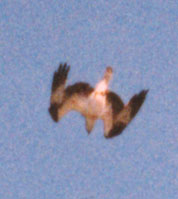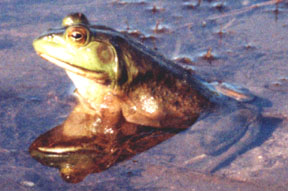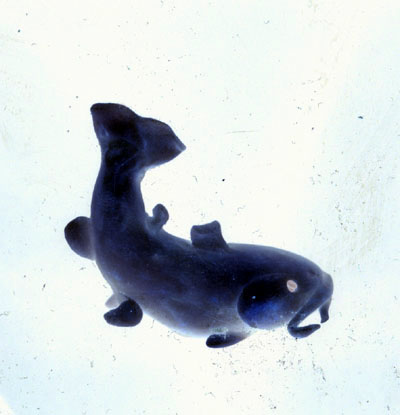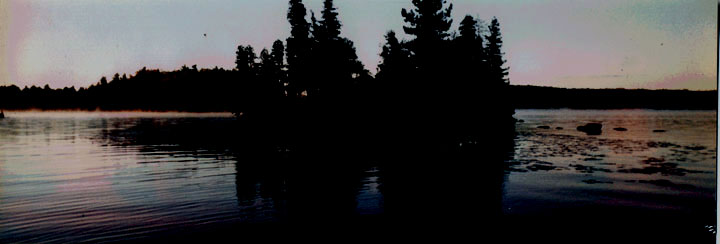
Big Loon Island,
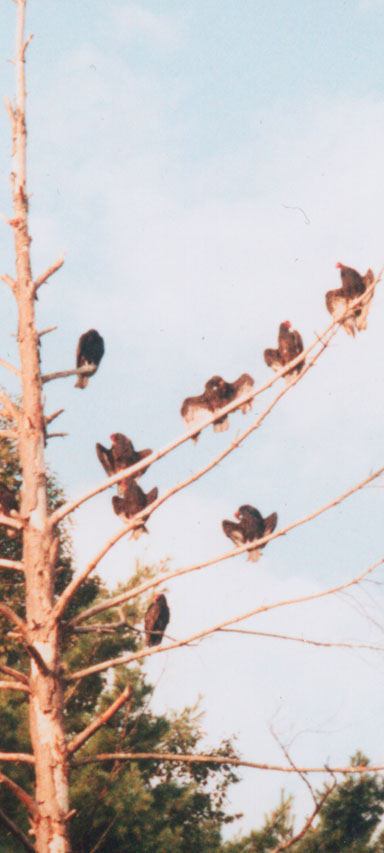
World Building
Though it is only about the size of the Rose Bowl or downtown Natural Bridge, Loon Island is a half globe facing all directions and has distinct climactic regions: the equatorial mists and cedars around the shore, red pine and hemlock on the windward West, birch, maple, and bass wood on the protected East; each tree zone with its own critters, understory, and backstory: some of that our doing.
We have set our camp on bed- rock at the top of the island under the dark sails of the largest pines. Behind the camp bathhouse, in logs and chunks too big to split, or burn, lies the grandparent oak which used to hold tree houses and coon families, now slumping into soil.
This is good, because top soil is scarce on the island and the competition for it is fierce. We have what at various times has been called a garbage, worm, or compost pile; but even in seasons when we have been dilligent enough to add leaves, the tree roots snake into the pile and eat everything the coons, mice, and chipmunks have not yet consumed. Very seldom do we cycle enough soil out of the compost to start a flower pot or encourage a transplant.
In the nineteen thirties my grandfather Failing made a list of thirty-four tree species which grew on the island, and he tried to implant even more. He could never get a tamarack to grow in our swamp, but when he introduced bittersweet vines from Birch island (for the orange winter berries birds and wreath makers like) the bittersweet vines raced over the island and became so overbearing that Grandfather spent many years trying, unsuccessfuly, to eradicate them. We don't fight them now days, but there have been no asphyxiations and no vine related strangulations.
During the periodic plagues of gypsy moths and tent catipillars, Grandfather torched their nests with kerosene, but of course he is gone and various of the gypsy moth tribes still pitch their tents here. Last year a boomer generation of the larvae ate all the leaves in some areas, littering lawn chairs and covering backyards in some places, ankle deep with their fecal rain. It was not that bad on Loon island, except around the picnic table. People squirmed and went off their feed, but raspberries and other bushes thrived in the increased light of the understory, and of course it was a good year for soil building.
The Name of the Loon
The Bonaparte Loon family, coming from the deeps off Round Island, navigates by our gazebo, and then a few yards out, turns up the channel between us and Birch Island. So this is a good place to observe loons, but to call it "Loon Island" may be a stretch.
Or it may be that was the island home of loons until my family displaced them. Loons are very old family among birds, haviing changed little since they were half way between a dinasosaur and duck. Especially once the big show off of the mating season is over, Loons pass out territory and get as far from each other as possible , and they are not beggars after people, so they prefer the swampier and more desolatle shorelines near the outlet of the lake for their floating nests, and they seek the open water off Round Island for their rowdy and raucus courtship displays.
Though "Loon Island," it may rightly be, people have long called it "Failing's Island", after my grandfather but he is gone and most of our family have never even seen a winter day on the island, but there are a lot of critters who actually spend their every day of their lives here, and have at least written their names in the snow.
Starting at Loon Island's equatorial shore, we have an animal which I doubt you will ever see, which you have probably never heard of, and which will never have an island named after it, unless that island is named "Star Nosed Mole Island." I only saw one in my life, and he was in the leaves I dug out from around our pump house where they accumulate every fall: maybe the moles as well as the leaves. This was a large mole: a category which almost overlaps with the category of small dogs, but if your larger dog saw this animal, that dog might run and hide under the camp. It's the nose of the thing! The nose has a lot of pink fingers. And he has no eyes. His fur is so dense you see no hair. His hands are flippers. I covered the startled mole up again pretty quickly.
The star-nosed mole is amphibious, often living in tunnels equally in and out of water along shore lines like ours. Recently scientists studying these moles, calculating that they would have to eat at a world record rate in order to maintain themselves in their situation, discovered that they were in fact the world champion speed eaters. This is a skill which they owe to their quick and sensitive nose fingers which are able to determine faster than any other organ in nature, whether or not something is edible.
Still down in the equatorial lattitudes are the more presentable, but also seldom seen mink which constantly stitch the water line with their arching bodies.
You have too look fast to see them; and you don't know but that the one you just saw was the same one you saw fifteen minutes ago, just coming around again as it incessantly follows the linee between rock and water describing Loon Island.
And then there are the beaver. Twenty or so years ago the beavers built a lodge in the little swamp behind our beach, and though they abandoned it some years back and moved across the chanel to Birch Island, they reappeared last year and built a much larger lodge right inside our boat house. We ourselves had already pretty much abandoned the boathouse, since the ice had pushed it irretereivably off its sprawled cribbings. We have decided to live with the beavers, or at least beside them although visiting on skis this last winter, I discovered a trap set for them at the mouth of the boat house. My brother William, cursing famously, pulled the trap and threw it onto the boat house roof.
Chipmunks - common in every Adirondack wood lot and and back yard wood pile - densely populate the whole island. If the island were a nation, chipmunks would constitute the greatest number of citizens outside of insects. And they are the type who would all run for office and vote most every day. Interested in every body's business, they will eat anything at anybody's table, and they can live where others can't. A first time Loon Island guest couple on their way up the path from the beach once stopped to watch a chipmunk as it struggled to swallow a good sized, living, lepoard frog. The chipmunks are territolrial, gregarious, quarrelsome, paranoid scolds, beggars and thieves, but, unlike mice, they don't try to move into our houses in the winter. All of this works to their advantage while their cuteness is what really gets the cake. In the U.S., individuals give substantianly more food aid to chipmunks than to starving Africans, though it might be differnt if the Africans were actually six inches tall and living in the wood pile.
Up island, with chipmunks always in the foregrouind, we occasionally have a snow shoe rabbit, with their fabled snow shoe feet, white winter coat as white as the snow, and as silent in all seasons, until you murder one, as did two mainland dogs who caught one behind the log cabin when I was sleeping there once. It really did scream, like a B movie crime victim and that frightend the dogs away, though without saving its own life.
Maybe every creature, like the swan and maybe me or a rabbit, has at least one and maybe only one song in it. But the Loons (we do keep returning to the Loons) usually thought of with a limited range of plantive, nostolgic, or longing cries, when they are actually in company and courting, sound so wild and so crazy that you might not recognize them as the calls of the Loon... or of any bird at all. And if a loon, as it was being murdered, were to scream across the tympanum of the lake when no one was there to hear it, then that person would be entirely obliterated.
We get the occasional racoon in the chimney or the single mother with cubs which parade accross the beach from the mainland when we grill an meat on the outdoor fire. We once captured and, for a while, kept one of the little coons which had come with family to one of our barbecues. We kept the little on in partial freedom, shut up at night on the screened porch. But the whole family returned every night and the other little ones would climb right up the screen, while our coon climbed up the inside like a reflection, until my parents finally took a snapshot, and then opend the door. This was just as well too, because the coon never learned to tell an ear from an appricot. Other midsized predators, such as the rare lynxes which have ranges the size of whole states, and the occasional fisher, which we have not seen, but which prey, as do no others, on porcupines and range where they do, are just not likely to be seen here, nor are the plentiful coyotes, nor was even the red fox which I saw dcoming uup the path from my grandparents' cottage, during my guntoting youth, when foxes were poorly thought of and boys were bad, I took a shot at the fox an fortunately missed both the fox and my grandparents' cottage.
Shall I count the birds?
Loon Island has more resident birds and frequent fly-bys than I have names or space for here ..... but beyond the Loon, I can list and recongize most of those bigger than a pigeon
Often if we return in the Fall, a couple of grouse will be pecking through our ground pine. These birds appear when we dissapear. And they thunder away when you walk up on them. In the days when I hunted them, this defensive wing thunder when they launched was enough by itsellf to trigger more than one inadvertent double shot gun blast into the autumm leaves We did not hunt Loon Island grouse, or partridtge (and patrigdge) as we have called them. And the grouse have not, as far as I know, tried to nest and raise their young on our island. The young are hatched with a head start on feathering and well devloped pectoral muscles which make them able to fly soon after hatching, and make them taste better even than frog legs, or whole may flies.
When we first return in spring, hawks perching or hang gliding low in the pine tops flare up at the sight of an unexpceted human. All summer long, morning and evening, we see the great blue herons as they commute from swamp to swamp. We have gulls, including I believe, the Bonaparte Gull, which is a coincidence, and occasionally we have fishing cormorants. Turkey vultures, which were not to be seen in Northern New York fifty years ago, a have been roosting in a colony of dozens on our neighboring Birch Island. If one of our larger creatures should happen to die without getting a proper burrial, it will be undertaken by a funeral colony of about two dozen turkey vultures which in recent years has been roosting nights on high pine limbs on our neighboring Birch Island. They hunt far, high, and wide, hardly flapping their wings, and when they return to their roost they will often spend half an hour spiraling down on the updraft, sometimes coming in low and slow over Loon Island. Thirty years ago, therr were no vultures up here at all, as if things hadn't died regularlly before then. Sunbathers, who have other things to worry that the vultures will mistake them for dead, since they hunt primarily by smell, a sense which is developed in them to the degree that they can siff out carrion burried under six inches of leaves from as high as the updraft carries..
Actual turkeys, which were never native this far north, can now be seen walking the North Shore Road to our camp. A pair of Osprey's nest in a dead head tree in a beaver pond we know of back in the woods, but they can be seen over the lake most days, and if you are lucky, you can see one stoop to fish, like the one pictured here as it fished near our boat house. Unlike other hawks, which flare at the surface of the water and plunge their talons to catch fish just below the surface, the osprey dive straight into the water. The first time I saw this I thought the ospery had just failed to pull out of his dive in time.
Most years there will be a mallard family hatched and raised in our bay, and some years we have a small colony of cormorants fishing from the rocks on our side of Birch Island.
You will even find a juvenile snowy owl on Loon Island, though it is over a hundred years old and died before it ever attained the pure white plumage of maturity. It sits, stuffed, on our fireplace mantel now, but it once sat on the ridge of a barn near Natural Bridge and the farmer who shot it as it sat there brought it to my Great Grandfather Dr. Drury to be saved. It died looking with its head cocked at Dr. Drury, so he had it stuffed in that reproachful pose, as you see it today. Snowy owls will occasionally be blown to us by strong winds from the farther north, and they don't know what to make of us, or that we are a particularly dangerous species, even at a distance.
And then the smaller, but equally remarkable birds: Because of their loud and far carrying call, whipporwills are as much a presence here as ducks and Ospreys, but they nest on the ground back in the woods of the wild west end of the lake where you are unlikely to step on them, though once, I nearly did. They are only about the size of a robin and with their big mouths they closely resemble the night hawks, though neither are hawks and you are unlikely to see either. But you will sometimes hear the night hawks directly over head, beeping paraelectronicly, sounding more like a survelance satelite than a bird, and once in the middle of the day back on the Fort Drum reservation, we were dived bombed by a nighthawk. The nighthawk's wings, when it dives straight down at high speed, vibrates with a loud noise like a bull roarer, or like plastic flag in a stiff wind. That nighthawk came very close before flaring up, but I have never known of one to actually strike a person.
Among the smaller birds, quite at home on the island, and unconcerned with us, we have the year-round black-capped and chattering Chickadees , the always inoffensive and usual little brown jobs, your creepers and peckers(downy, hairy, and piliated), sapsuckers, swallows, cow birds, king birds, and hummers: ruby throated exclusively.
The humming birds can be said to hum, and they will come up to your ear sometimes as if they were going to sing or say something, but it it is likely only that your ear , which is a little red, has been mistaken for a flower.
The Small, The Elegant, and the Mean.
Generally speaking, the smaller Loon Island critters get, the meaner they might be. Start with the deer mice, which are so cute that if you found one in a tea cup, you would want to adopt it. Though they are not what are called house mice, they love to move into our cottage just as soon as we decamp. They will occupy any drawer we have not turned upside down, then rearrange its interior, shred the doccuments and missuse the linnens. In the kitchen they eat the soap but don't use it properly, and fail to distinguish between sugar and mouse litter.
Back outside are the inoffensive unstarred moles which are no problem for us but a terror to all grubs, then the smaller but fiercer, fighting shrews which can kill many times their weight in other creatures each day and, if confined together, will kill and consume their own kind.
But insects, by and large (some of them larger than the smallest mammals) are the most formadable wildlife of Loon Island, and if I have said that the woods belong to the porcupine, I might have to take that back.
You can see water spiders big as monkey paws on the cribbing of our boat house, though you might not want to. Seeing as we are again in the boathouse, which is the most inhabited square footage of the island, I should point out the barn swallows which nest there along with the little brown bats which alternate with the swallows, doing the the night shift on airborne insect patol. Fish and turtles are in the boathouse too, but we will get to them later. And snails and clams too, as welll as water snakes, but I have to draw the line somehwere.
Still on the larger scale among the insect tribes, are the dragon flies, which dart along accompanying the fastests of power boats, then flare off up and ahead. And then fearsome Horse flies the size of small mamals. They do not suck your blood: they bite off chunks of meat, so if you see one on your friend, you should probably hit them both hard with a paddle and then dive under water
Deerflies, are smaller, but more plentiful. They attack in squadrons and see people as deer without the protetive body hair.
Everyone knows about mosquitoes and black flies , which by themselves pretty much rule the North in their season. But then you arrive at the no-see-ums, which swarm in the spaces between black flies, and are so small you cannot see them, but they can drive a person over a cliff.
And yes there are common working ants of the various races, bees - honey and bumble, pill bugs, centipedes, lady bugs, butterflies, moths, June Bugs, and other harmless and even beneficial insects; but the insects I think of as being most emblematic of Loon Island, and which are there in great plenty in their season, are the May flies.
Called "Eel Flies by some people (especially by those with an aversion to them) May flies do have very long bodies, and they are probably more common in June than in May up here, just as, June bugs are more to be seen here in July. Whatever month the ephemeral mayflies emerge, their adult days are few. They have a long nymphal stage underwater, and then one day swim to the surface of the water and then crawl out of their nymphal husks as they float on the surface tension, then sail along for a few moments, before arching up and sailing off on their deltoid wings for a very few days of pure sex, generally unintrupted by eating, unless they become food for fish, mayflies being the model of the dry flies trout fishermen use. To a fisherman, as well as to a trout, these creatures are supremely beautiful. And my earth brother William testifies that they are just as delicious as the trout seem to think they are.
I have not eaten them and may not try, but for years I had wanted to witness the giant hatch of giant Green Drakes that I had read about in my Outdoor lifes and Field and Streams as they happen on the great trout waters of the wild West.
Then one June less then twenty years ago, when I was up at the lake to build a gazebo on Round Island, I sat out on the Loon Island camp porch around ten oclock at night, and I could see nothing out on the lake, or even stars overhead, but I could hear an awfull lot of slurping sounds from the lake. I went out side with a flash light and I could feel the may flies brushing me. Waving the flashlight up into the air I llived it up for a while, controling the gigaintic illuminated club of these creatures. I went out onto the lake in the canoe then and found that most of the fish were swimming along at the surface feeding quietly. I saw a foot long bull head - normaly a bottom feeder- swiming along the surface with his mouth wide open. Mostly, I couldn't see or locate the fish around me, but when I hit the bottom of the aluminum canoe with my paddle it made the fish which were so near the sur face jerk, and splash. Though I still couldn';t seem the strike, caught a few black crappies by casting to the sound.
The island is owned by us for now, and it will always be surrounded by fish, but it is the amphibians who will inherit it. Bull frogs in our bay are impossible to ignore, even though you may never see them or know what is making the racket. The bull frogs are such thunderous wind bags they can be mistaken by the unwitting guest for cows, or, when the total united swamps chorus gets going, being echoed and taken up from swamp tol swamp along the beaver flows, like an allied ariel invasion.
To some of us, that is almost restful, to others it can sometimes be disturbing. My grandfather is famous in our family for once lying awake one August evening (probably as he hoped to get up at five to go fishing) and growing so infurriated with the frog chorus that he took his deer rifle and my grandmother out in the row boat and, with Donna holding a flashlight, proceeded with his thirty-thirty to blast frogs.
Except for that night with my grandfather, we have let the home frogs be, but we used to go to the further swams to shoot frogs for their legs, which dod not taste like chicken, but better. It is an awful shame to take the legs and throw out the rest of the frog, and the world generally is short of frogs now.
Big Turtle
But whatever case you might make for the loon, the beaver, r the chipmunk, or even the bull frog as an appropriate namesake for the island..... its totem might best be the snapping turtle that lives at the top of the food chain here, as well as at the bottom . The little island in our boathouse bay is labled "Little Loon Island" on the real estate map, but we call it Turtle Island, which is partly because it actually looks like a turtle, with off shore rocks for a head, and a jointed tail, but also because the turtles climb up on it and depost their eggs in the crumbling calcite of the little island's dome. Sometimes you find whole eggs, round as ping pong balls, and about the same size, which have rolled right off the back of the island into the water.
There are have always two or more grand old, tire sized snapping turtles in our bay, each of which, since we rarely see them together, we call , "The Big Turtle."
The biggest Great Northern Pike I ever saw was floating in our bay forty years ago and it was being eaten by Big Turtle. The pike had been about the size of a dachshund, but had alrleady the turtle had snapped down a third of it.
That turtle seemed to be as large then as now: so big that I will not try to guess the weight, but if you had seen that great head savaging the pike corpse, you would have thought the rest of the turtle was bigger than both of us. Big and powerful as the turtle was and is, it is likely that the pike died of a propeller strike or a hook in the throat or even old age, than from the attack of a turtle. Snapping turtles are often content to feed even below the bottom of the food chain where they can adapt to eating what we can hardly even mention at the dinner table.
During summers when we fished most every day, the Big Turtle would be lurking in the cribbing of the boat house and under the dock. It would come out while we were still tossing fish heads and entrails into the water.
Once as my brother Herb kneeled on the dock and swished a fish in the water to rinse off the blood , the turtle, which had been directly under him unseenk snatched a fish right out of Herb's hand
In my grandfather's day, the snapping turtle was damned in many people's minds as responsible for decimation of the the fishes, although I am pretty sure that it was the people, led by my grandfather, Doc Howe, Jim Feron and other semi professional fishers, that were taking the most meat out, and that, although the fish populations has changed by people therte are probably more fish, and certianly more species, in more places that ever before. . But the Turtle has not changed much, neither its looks nor its numbers, was here before, and will be here when we are gone they are hard to kill, as bullets ricochett off the water and the snappers don't stick much above it. With their humility, toughess, flexibility and good design,, they prosper unchanged, and will outlive our kind, inheriting the island, the lake, and the Earth. .
Modern geologists essentially agree with the common native Amercan perception that the North American continent is a great turtle moving slowly across the sea whose mossy and plated back shifts unpredictablly, suddenly under us.
The very little snapping turtles are not just cute and disproportiionate versions of the bigger ones, they are exactly like the big ones, and both are perfect little din0saurs, with all the fascination that the human imagination has for the miniature; certianly I was fascinated by them and late every summer would spend many hours in the catail swamp behind the Loon Island beach where the little ones feed and among the black rottting leaves they resembled. I would lie out on the bow of the canoe or on the board walk or a swamp log and, with a turtle like intensity of concentration I would usually notice a leaf that lived and would come up with one or two of the perfect little devils for the home aquarium, in which I might also have a sunfish or a rock bass.
The last snapping turtle I kept in Ithaca, was brought to me in recent years by a kid of another generation and I kept it so long and it got so big that I could get him to stay in wash tub I had for him in the bathroom and I had continualy to pull him by the tail out for under the bathtub. When I tried this, he would raise up on his toes and force his shell against the bottom of the claw foot tub It was getting too difficult to control him, so before he magaged hump the tub right up off its plumbing, I transported him to upper Cascadilla creek.
Even turtles at home in the lake, will crawl...walk really, because the snappers can get well up off their carapice, unlike the mud turtles, and climb a good deistance up on the rocks to lay their eggs, or to claim new territory.
Most every winter one of my the little snappers would escape from the tank, and migrate around the house. sometimes we would find one after dayws or a week still plodding but in a big ball of gathered dust. I found one of the little turtles under our living room radiator twenty years later, when I was sanding the floors. He was very dry and gristly but looked like he could be restored if you just soaked him in Bonaparte water.
Foot Notes:
Star Nosed Moles nose fingers, in addition to speeding up the efficiencey of the trip between nose to mouth, have the added efficiency feature of being able to pick them selves
have found clear evidence of fishers in the form of an empty porcupine skin on top of the snow in the Bonaparte State Forest. A fisher is about the only non tool using animal which regularly kills porcupine, which he does by coming up from under deep snow and attacking the unprotected belly .
There is an old newspaper clipping in my grandmoter's scrapbook reporting the time when my my grandfather and a friend out fishing in the channel between Birch and loon Island once saw a deer, and shortly afterwards (whether or not it was persuing the deer is not clear) swiiming from the mainland to birch island, which you would not expect to harbor a bear or a deer either.



